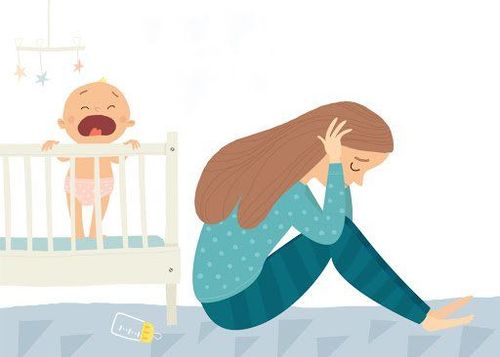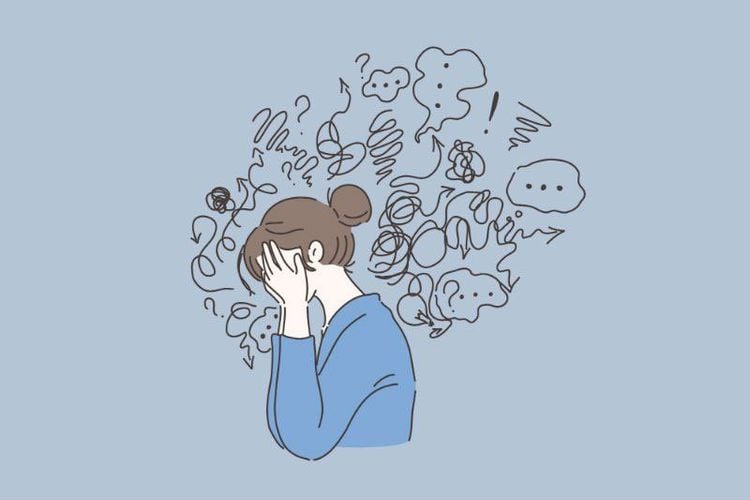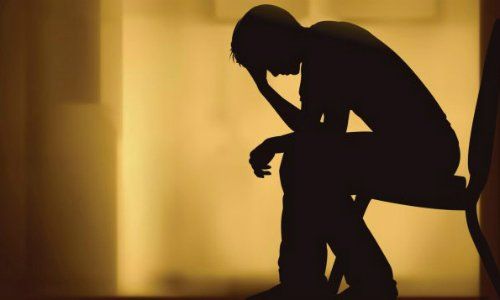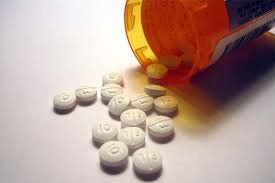This is an automatically translated article.
Sadness and grief are normal human emotions. We all have these feelings in our lives, but they usually go away within a few days. However, major depression, also known as major depressive disorder, can last longer. It is a diagnosable condition that is classified as a mental disorder and can cause lingering symptoms such as sadness, low energy, loss of appetite, and a lack of interest in things that once brought you joy. fun.1. Classification of depression
Specific circumstances can cause other forms of depression or subtypes of the condition.1.1. Major Depressive Disorder An estimated 16.2 million adults in the United States, or 6.7% of American adults, have had at least one major depressive episode in a year.
1.2. Persistent depressive disorder You may have an episode of major depression or may have recurrent episodes. Persistent depressive disorder is chronic low-grade depression that is less severe than major depression and lasts two years or longer.
These persistent feelings of profound sadness and hopelessness, along with other symptoms such as low energy and indecision, occur in 1.5% of U.S. adults in one year. The condition is also more common in women than men, and half of all cases are considered serious.
1.3. Bipolar disorder Another type of depression is bipolar disorder, or manic disorder, and affects about 2.8% of the U.S. population in one year. This type of depression occurs equally in men and women, while 83 percent of cases are considered severe.
Disorder associated with the development of a manic, or energetic, mood episode. Sometimes, these episodes can occur before or after depressive episodes. The presence of manic episodes is a factor in determining the type of bipolar disorder diagnosed.
1.4. Seasonal Depression If you have major depressive disorder, also known as seasonal affective disorder, your mood is affected by seasonal changes. This condition occurs in up to 5% of the US population in a year. Seasonal depression usually begins in the fall and lasts through the winter, and very rarely occurs in the summer and spring.
Geography and distance from the equator play an important role in this disorder. Women also have a higher rate of this disease than men.

Bệnh trầm cảm nghiêm trọng theo mùa khiến tâm trạng của bạn bị ảnh hưởng bởi những thay đổi theo mùa
It is caused by hormonal changes after childbirth, lack of sleep and the pressure of taking care of a new baby. When these symptoms persist for longer than a few weeks and the severity is increasing, it could be a sign of perinatal-onset major depressive disorder, also known as postpartum depression.
Other symptoms of postpartum depression include withdrawal, loss of appetite and negative thinking. According to the American Psychological Association, about 10 to 15 percent of American women have a depressive episode within three months of giving birth. One in five new mothers experience a mild depressive episode, and up to 10% of new fathers may experience it as well.
Dr. Christina Hibbert, clinical psychologist, calls this “a family illness”. If left untreated, it can be dangerous for both the parent and the baby.
1.6. Psychotic depression When major depression or bipolar disorder is associated with hallucinations, delusions, or delusions, it is called major depressive disorder with psychotic features. About 25% of patients hospitalized for depression actually have a mental disorder. 1 in 13 people worldwide will experience a psychotic episode before the age of 75.

Các triệu chứng khác của bệnh trầm cảm sau sinh bao gồm cai nghiện, chán ăn và suy nghĩ tiêu cực
2. Rate of depression
The National Institutes of Mental Health (NIMH) estimates that 16.2 million adults in the United States had at least one major depressive episode in 2016. This number represents 6.7% of the population. grew up in the United States.Depression is most common between the ages of 18 and 25 (10.9%) and in individuals of two or more races (10.5%). According to the NIMH and World Health Organization (WHO)Trusted Source , women are twice as likely to develop depression as men. From 2013 to 2016, 10.4% of women were found to have depression, compared with 5.5% of men, according to CDC Trusted Source.
The World Health Organization estimates that more than 300 million people worldwide suffer from depression. It is also the leading cause of disability in the world.
3. Symptoms of Depression
You may be depressed if you have feelings of sadness or emptiness that don't go away within a few weeks. Other emotional symptoms include:Extreme irritability over seemingly trivial things Anxiety and restlessness Trouble managing anger Loss of interest in all activities, including sex . Always thinking about the past or the past Feelings wrong Thoughts about death or suicide If you think someone is at immediate risk of harming themselves or hurting others:
Seek the help of medical professionals for the person. Stay with the person until help arrives. Keep guns, knives, drugs, or other potentially harmful things away from the person. Listen to what the person has to say, but don't judge, argue, threaten, or yell. Physical symptoms of depression include:
Insomnia or oversleeping Weakness fatigue Increased or decreased appetite Gain or loss of weight Difficulty concentrating, difficulty making decisions Unexplained pain In In children and adolescents, depression can cause feelings of inferiority and guilt, poor concentration, and frequent absences from school.
Depression in older adults can be more difficult to detect. Unexplained memory loss, trouble sleeping, or withdrawal symptoms could be signs of depression or Alzheimer's disease.
4. Why depression?
There is no single cause of depression. Brain chemicals, hormones, and genetics all play a role in disease. Other risk factors for depression include:Low self-esteem Anxiety disorders, personality disorders. Post-traumatic stress disorder Physical or sexual abuse Chronic illnesses such as diabetes, multiple illnesses. Multiple sclerosis, or cancer Alcohol or drug use disorder Certain prescription drugs Family history of depression Age, sex, race, and geography.

Có nhiều nguyên nhân gây ra bệnh trầm cảm
5. How is depression diagnosed?
If you or someone you know has symptoms of depression, your doctor can help. See your doctor if symptoms persist for more than two weeks. It is important that you report all symptoms you have. A physical exam and blood tests can help rule out health problems that may similar to or contribute to depression.A diagnosis of depression usually requires that symptoms occur for two weeks or longer. According to the 2013 Diagnostic and Statistical Manual of Mental Disorders, the diagnosis must also include four other changes in daily functioning. These may be related to:
Disruption of sleep or eating Lack of energy or concentration Problems with self-image Suicidal thoughts.
6. Treatment of depression
Depression is treatable. Even so, according to WHO, less than 50% of people with depression worldwide receive treatment.The most common treatments for depression are antidepressants and psychological counseling. In adults with moderate to severe depression, 40 to 60 percent of people who have taken antidepressants notice an improvement in symptoms after six to eight weeks.
The American Psychiatric Association suggests that a combination of both antidepressants and psychological counseling is, on average, more effective. However, each treatment method has its own effectiveness, and is roughly the same. However, patients are not always able to use these two treatments due to a number of factors such as cost and time.
Psychotherapy was found to have a significantly lower relapse rate (26.5%) than medication (56.6%). Research also shows that psychotherapy has a lower dropout rate than drug regimens.
If the above treatments do not work, another option is repetitive transcranial magnetic stimulation. This treatment uses pulses of a magnetic field to stimulate parts of the brain that regulate mood. This treatment is usually done five days a week for six weeks.
Psychotherapy and medications (including vitamin D) also work for seasonal depression. This condition can also be treated with light therapy. Seasonal depression can sometimes improve on its own without treatment during the spring and summer months when daylight hours are longer.
For severe cases, electroconvulsive therapy (ECT) may be used. ECT is a procedure in which electrical currents are passed through the brain. According to the National Alliance on Mental Illness, electroconvulsive therapy is used most often to treat depression and psychosis that do not respond to medication.

Các phương pháp điều trị bệnh trầm cảm phổ biến nhất là dùng thuốc chống trầm cảm và tư vấn tâm lý
7. Complications of depression
Prolonged or chronic depression can have a devastating effect on your mental and physical health. If left untreated, this disease can put your life in jeopardy. Mental Health America reports that 30-70% of people who have died by suicide have depression or bipolar disorder. Other complications of depression can lead to include:Alcohol or drug use disorders Other chronic headaches and aches and pains Phobias, panic disorders and anxiety attacks Trouble with school or work Work Family and relationship problems Social isolation Overweight or obesity due to diet Increased risk of cardiovascular disease and type 2 diabetes Self-injury Attempts to commit suicide If left untreated, depression A cold can lead to serious health complications, including your life. Fortunately, there are effective treatments for depression through options such as therapy, medication, diet, and exercise.
If you see signs of depression, take the patient to see a doctor as soon as possible. Psychology Clinic - Vinmec International General Hospital is the leading trusted address for effective examination, consultation and treatment of psychological diseases and mental health.
The clinic owns modern facilities, the world's leading advanced equipment, serving medical examination and treatment methods such as psychotherapy, light therapy, psychological tests... The medical team at the clinic is highly qualified and experienced. Many doctors are professors, leading experts at Hanoi Medical University and major hospitals across the country, bringing outstanding treatment results. Location at Vinmec Times City:
Room 4063, 4th floor, General Internal Medicine Department
Clinic working schedule from 8:00am - 12:00pm, afternoon 13:00-17h00
Please dial HOTLINE for more information or register for an appointment HERE. Download MyVinmec app to make appointments faster and to manage your bookings easily.
Reference source: healthline.com












